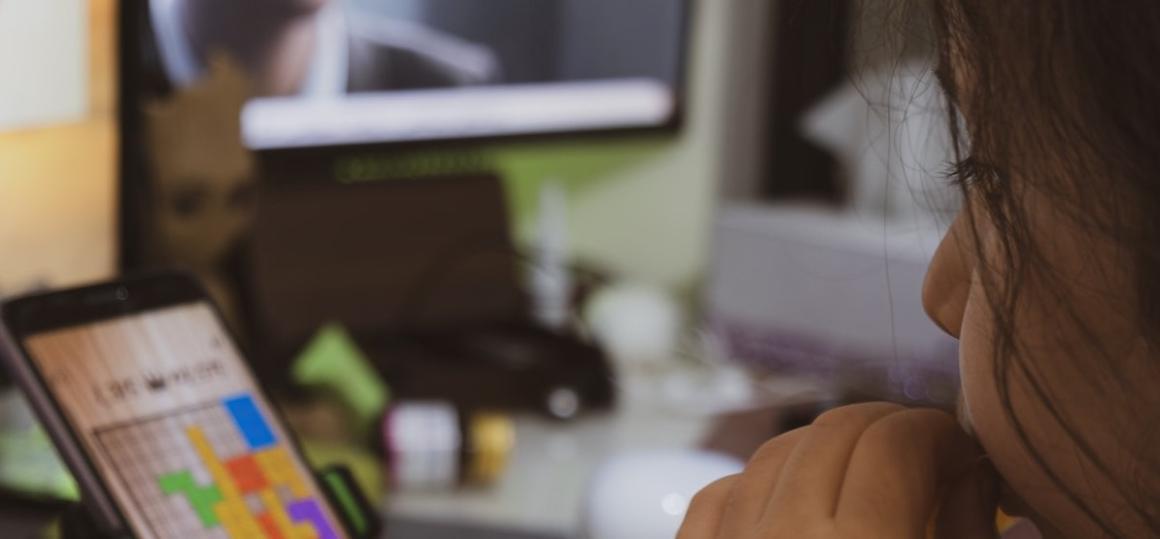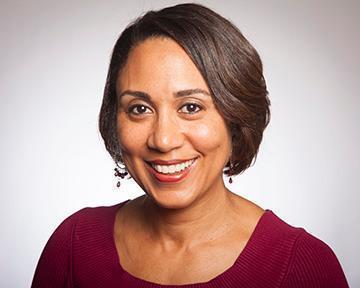
Children, Schools, and the Pandemic
Brett Johnson Solomon
Brett Johnson Solomon is worried about kids—your kids, her kids, but especially underprivileged children who already were struggling with school and life before the pandemic.
As an associate professor in Santa Clara’s Child Studies Program and mother of a 10-year-old and 13-year-old, she is keenly aware of the challenges that children in particular have been facing over the last year, from social isolation to remote learning, and the anxiety that accompanies both.
Ongoing educational disparities are especially concerning to Solomon. A recent McKinsey report that analyzed diagnostic test scores based on remote learning across the U.S. showed that American students from kindergarten to fifth grade have missed out on 20 percent of the reading and 33 percent of the math skills they would have learned if they were in school. For students of color, the number increases to 23 percent in reading and 41 percent in math.
Add in the potential lack of physical activity, and for many, the absence of subsidized school meals, access to technology or even basic safety, and Solomon—who studies the school-to-prison pipeline—fears a new lost generation of children who will have a tougher time healing or catching up when life resumes post-pandemic.
We talked with Solomon about these and other issues, as well as a new project she has launched to reach out to children of different ages, backgrounds and races around the country about their feelings during this historic period.
Beyond the above-mentioned factors that can contribute to children struggling or falling behind during the pandemic, particularly those from under-resourced families, are other examples we may not stop to consider. Can you address a few of them?
There are children right now with unidentified learning differences like dyslexia, who need to be identified, and that usually happens in a classroom with observation. Is it happening online? I don’t know. In addition, children aren’t spending the same amount of school time on screen as they would in actual school—it’s a condensed version of learning, and there’s a lot of idle time.
For children in homes where parents are essential workers, you combine the potential of a lack of parental supervision with idle time and it can result in a multitude of risks for children. For example, we already know that most juvenile crimes occur between 3 p.m. and 7 p.m., the hours between when children are out of school and when their parents get home from work or it’s time for dinner. The context of the pandemic, combined with parents who are working out of the home, raises concerns for the safety and wellbeing of un- or under-supervisedchildren.
I recently read a story in USA Today that highlighted a high school senior in Florida who was an engaged pre-pandemic student, yet in distance learning, he was failing his fall semester classes. It turns out that the pandemic brought about new household responsibilities and his grades were impacted because he was not on screen/in class as frequently as he should have been. Though his school set up support for him, many schools do not provide such options.
The fact that Black and brown children are impacted the most by the pandemic is directly related to race, class and the notion of social reproduction—where schools would be considered places to maintain class differences. Social reproduction in schools is not so far-fetched when you consider tracking and observe which kids are in AP and honors classes and those who are not. This pandemic will further widen the academic success gap among our country's students because it shines a glaring spotlight on the pre-existing social and racial disparities in education.
Some disturbing behavior has surfaced as well during online classes, and you urge parents and children to pay attention and report it immediately to school administrators.
Last fall, I was interviewed by a reporter about a Los Gatos teacher and youth theater director who was arrested after reports of inappropriate behavior on Zoom, and that eventually led investigators to a former student who alleged he was sexually abused. There was a San Jose teacher caught shirtless on Zoom during a special education class. In Santa Monica recently, a drug dealer got in touch with a 16-year-old kid on social media, sold him some Xanax laced with fentanyl, and the boy died.
During the pandemic, predators have really taken advantage of the fact that kids are on screens for extended periods of time.
Kids already have the power and knowledge to understand when something feels right and when something feels wrong, which is why the conversations we have with kids from a very young age are so critical.
There’s another aspect: Since working from home, I’ve been able to watch and listen to my own children during school and I happened to overhear my daughter’s algebra teacher berating the class on how poorly they did on their homework and expressing her doubts about their success on an upcoming test.
I understand that we are all struggling in the COVID environment and I understand that nobody is in the place they want to be. But your responsibility as a teacher is to empower, motivate and cultivate interest, whether it’s online or in a classroom.
I don’t speak to my children that way, and I certainly don’t expect a teacher to. I’ve since taken my daughter out of that class and she is now working with a thoughtful, empowering and motivating teacher, online, who’s delivering the same content.
You also point out that for some children, school serves as a buffer to potential issues that may occur in the home, such as abuse.
When we first went into shelter in place, my mind started spinning about what's going on with children in their homes. We know homes are safe places for most kids, but we also know homes are unsafe places for children as well.
In Santa Clara County the reporting of child abuse went down 42 percent in April 2020, because teachers are mandated reporters. But they can't report what they can't see. We know schools are places for learning but schools are also places to protect children and to nurture children, not just their bodies, but their hearts and minds, and the fact that child abuse reporting continues to be down worries me.
Unfortunately, some children live in homes that are not looking out for their best interests, and they don't have an outlet, they don't have a teacher, they don't have friends or other caring or trusting adults they would ordinarily be in contact with in school. The isolation lends itself to other issues of abuse in an already unstable home environment; there are no checks and balances in place.
On top of the challenges of remote learning, many children may also have witnessed troubling national incidents while at home during the last year, from the murder of George Floyd by police last May to the deadly attack on the U.S. Capitol in January. Can you talk about that?
What happened to George Floyd isn’t new to Blacks. But it was an awakening for the country and for White America who quite frankly had little awareness of what was going on, so that was a tipping point for many. But the other side that has also emerged, from cracks and fringes of the country, is the white supremacists, QAnon followers and people with extremist beliefs.
As the parent of African-American children who are living through this, my true fear is no longer them being stopped by the police. Only because my husband and I can, at least, give our children the tools and skills that they need when confronted with such situations. What we can’t train them for are the unexpected encounters with emboldened white supremists who may live in our neighborhood, work at the grocery store, or worse work in their schools.
Our children have a lot of questions. Many are suffering from depression or have anxiety, and parents are genuinely doing the best that they can. Part of what parents can do right now is take time to listen to their children and validate their feelings. The listening, the validation and the perspective taking are nourishment to the trusting parent-child relationship which will continue to strengthen as they grow and mature.
February is Black History Month, and you are president of the San Jose Chapter of Jack and Jill of America, a membership organization of mothers with children ages 2-19 dedicated to nurturing future African-American leaders by strengthening children through leadership development, volunteer service, philanthropic giving and civic duty. Can you discuss the special project you’re working on that intersects with Jack and Jill and your Child Studies work at Santa Clara?
I write a weekly message to the mother members of my chapter about life, children, motherhood and Black Excellence. I’ve had a particular focus on how we navigate motherhood during this racial and public health pandemic. Earlier this month I wrote about listening to our children during these challenging times—something I would encourage parents of all races and ethnicities to also do. There’s so much going on in the world and so many decisions are being made on behalf of children, yet are we actually asking children what they think or how the world events affect them?
That particular message served as a launch to an interview series I started this month where I talk to kids, with their parents’ permission, about the pandemic and how it has affected their lives. It’s not just Black kids; I hope to interview kids of every race, from different parts of the country.
In addition to their name and age, I ask questions such as: What do you know about COVID-19 and how has it made things different in your family? I also ask them to tell me what they know about what is going on in the world, and if they could change anything right now, what would that be? Finally, I ask them what they would want adults to know about them, and what they want to be when they grow up.
My first interview was with an 8-year-old African-American girl in the second grade, and she was spot-on about what was going on in the world around her. Our children are incredibly thoughtful, insightful and practical. All we need to do is ask!
The interview series is an informal project that I hope to share with adults who can draw their own conclusions about what our kids are learning, from home, school and the community. It’s always grounding to listen to children, and I truly believe that if we took more time to listen to our children, we would be more intentional in our purpose as adults.

